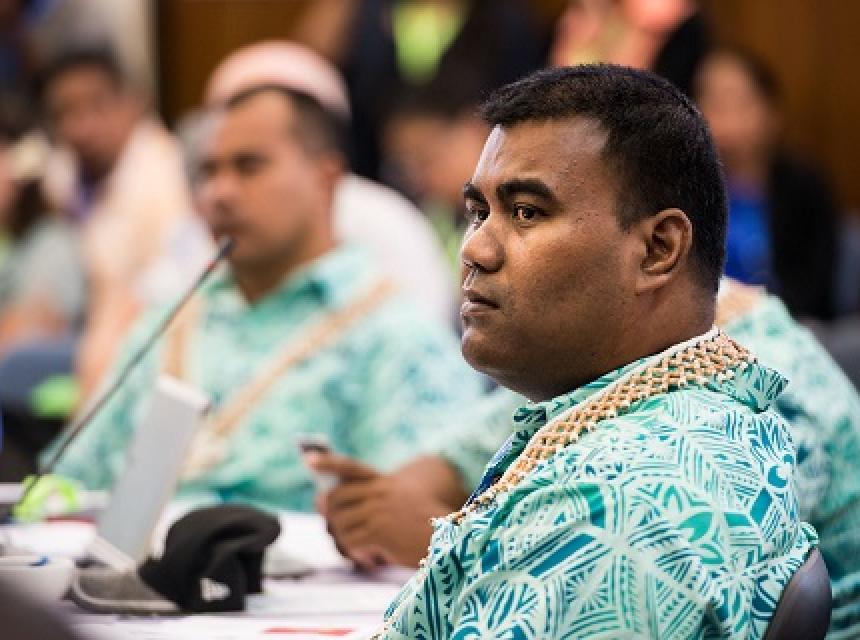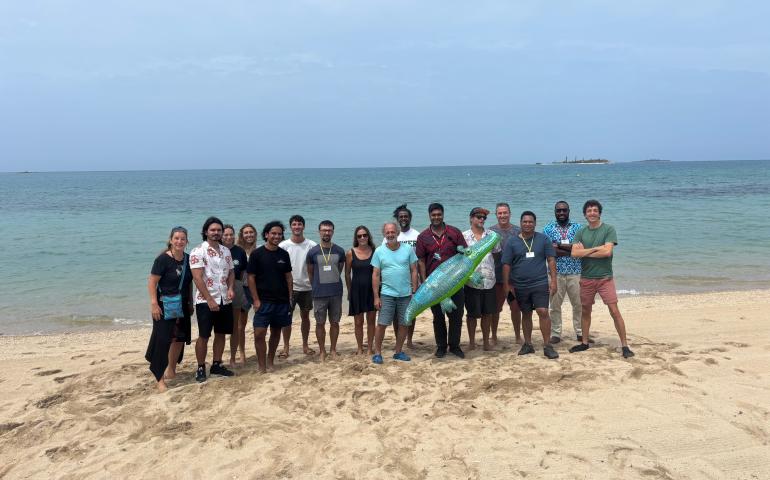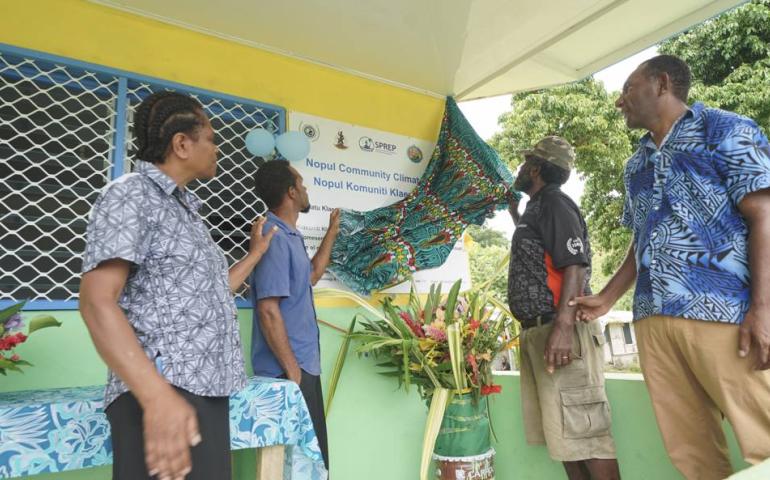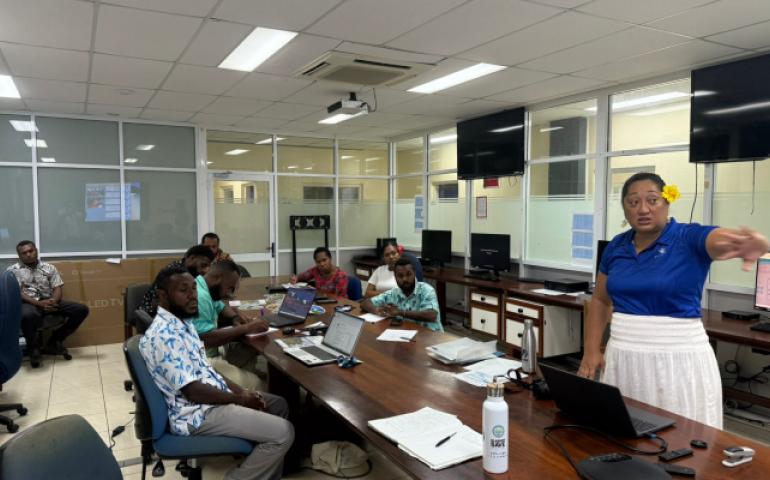Weather and climate information vital for development, says Kiribati Met Director
By Bentaake Kiima of Broadcasting & Publications Authority, Kiribati
15 August, 2017, Honiara, Solomon Islands, PMC-4 – The Kiribati Meteorological Services (KMS) Director has highlighted the vital role of weather and climate information in development in his country report during the Fourth Pacific Meteorological Services in Honiara, Solomon Islands.
On the achievements Kiribati have made since the last meeting in 2015, Mr Ueneta Toorua acknowledged regional agencies, donor partners and other organizations that have supported the Kiribati Meteorological Services directly or indirectly over the last two years.
These partners included the Japan International Cooperation Agency (JICA), Government of Fiji through Fiji Meteorological Services, Fiji Airways and World Meteorological Organization, Building Safety and Resilience in the Pacific (BSRP) under the Pacific Community (SPC), Africa Caribbean Pacific – European Union, United Nations Development Programme,Least Development Country Funds (LDCF), Finnish Pacific (FINPAC) project, and the Climate and Oceans Support Program in the Pacific (COSPPac).
Some of the achievements Mr. Toorua mentioned in his report were the completion of the in-country refresher training to meteorological observers, technical support and guidance toward compliance to Part 174 as required in weather service for aviation, the ongoing three construction of a new meteorological building at Cassidy Airport on Kiritimati Island, support to have automatic weather stations that will soon to install in three outer islands (Nonouti, Abemama and Maiana), and manual equipment for Bonriki and Cassidy Airports.
He added that among the external support, the Kiribati government has also put some effort into improving the national meteorological service. He also highlighted the need for inclusion of a project-funded staff position to the permanent office, provision of office vehicle to support Met operations on Kiritimati.
Mr. Toorua said the government was also reviewing a KMS proposal on a re-structure for 2018, which would provide additional positions for qualified managers post to improve compliance to national and international regulations and requirement.
The director said that the government of Kiribati had a vision called the KV20, where tourism and fisheries were key priority areas for “a quantum leap” in terms of Kiribati Development plans.
“Weather and climate information plays a very important role in development and therefore we looking forward to more support,” said Mr. Toorua.
He said the government was seeking more support to expand the Climate Early Warning System and the re-opening of their manual stations for full coverage, and support to establish an Observation and Forecasting Office next to airport in the capital Tarawa. The government also wanted support to enable more staff to undertake meteorologist training courses, support to improve early warning communications to all Kiribati outer islands, which were out of range from internet and telephone networks, and support to improve base services on how weather and climate information can assist health, tourism and fisheries in Kiribati. - #PMC4 #PacificMet
(Photo credit: Jenny Davson-Galle SIMS)
The Fourth Pacific Meteorological Council is being held in Honiara, Solomon Islands from the 14 – 17 August co-hosted by the government of Solomon Islands, the Secretariat of the Pacific Regional Environment Programme (SPREP) and World Meteorological Organization (WMO). This will followed by the Second Pacific Meteorological Ministers Meeting (PMMM) on the 18 of August.
The PMC and PMMM is supported by the Government of Solomon Islands, SPREP, WMO, Government of Australia through the Climate and Oceans Support Programme (COSPPac) and Pacific Australia Climate Change Science and Adaptation Planning Programme (PACCSAP), Government of Finland, National Ocean and Atmospheric Administration (NOAA), United Nations Development Programme through the Resilience in the Pacific (SIDS) project.
The PMC consists of members of the Pacific National Meteorological and Hydrological Services supported by its technical partners, regional organisations, non-government organisations and private sectors.
This article was developed by a Pacific Media Team of Reporters currently providing coverage on the Fourth Pacific Meteorological Council in Solomon Islands. This activity coordinated by SPREP is supported by a partnership between the Government of Solomon Islands, SPREP, Australia funded project (Climate and Oceans Support Program (COSPPac) and UNDP Disaster for Pacific SIDS (RESPAC) project.
The views and opinions expressed in this article are those of the writer and do not necessarily reflect the views of the Secretariat of the Pacific Regional Environment Programme (SPREP) or the United Nations Development Programme (UNDP)both of which provided funding for generating media articles.
- Log in to post comments




